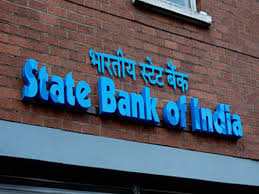Despite the constant introduction of new investment opportunities each year, particularly by asset management companies (AMCs) launching new fund offers across different categories and themes, high-interest fixed deposits (FDs) remain a steadfast attraction for both young and old investors alike. The enduring appeal of FDs, despite their age-old concept, underscores how even the most innovative financial products introduced in the industry have not diminished the interest in these government-sponsored investment vehicles.
Recognizing this trend, the State Bank of India (SBI) has introduced a new term deposit scheme called Amrit Vrishti. The scheme is designed with a customer-centric approach, offering competitive interest rates and catering to both domestic and non-resident Indian customers. The Amrit Vrishti scheme offers an enticing interest rate of 7.25% per annum for deposits of 444 days, starting from July 15, 2024.
Additionally, senior citizens will receive an extra 0.50% interest, maximizing returns for this demographic. This scheme remains open for investment until March 31, 2025, presenting retail investors with ample opportunity to capitalize on the elevated interest rates.
Investors can avail of the Amrit Vrishti scheme through multiple convenient channels including SBI branches, YONO SBI, YONO Lite (mobile banking apps), and SBI internet banking (INB). This ensures flexibility and accommodates both online and offline transactions.
Also Read– How to Apply for Education Loans in India: A Step-by-Step Guide
Is Amrit Vrishti worth its name?
While the scheme may appear appealing at first glance, its true value comes into question when considering that the post-tax interest rate may not be sufficient to outpace inflation. In a period where daily living expenses are soaring, relying solely on FDs for wealth creation may not be financially viable.
Before evaluating the scheme’s effectiveness, it’s crucial to consider the investment duration. The power of compounding is most evident over a longer investment horizon. The Amrit Vrishti option, however, limits the investment period to just 444 days, without provisions for renewing FD investments at the same interest rate. This suggests that this investment is suitable primarily for individuals with short-term goals, rather than for many investors seeking to generate returns on their investments over extended periods, such as a decade or more.
Hiren Thakkar, Chartered Accountant Proprietor, Hiren S Thakkar & Associates, says, “With a pre-tax internal rate of return at 7.80%, and a post-tax return of 7.75%, an initial investment of ₹1,00,000 will generate ₹9,787 over 444 days. This is because a shorter investment horizon limits the opportunity for compounding to maximize growth. The interest earned may not be sufficient to significantly increase your investment.” The Amrit Vrishti scheme, with its 444-day term, provides a respectable interest rate but may not be optimal for fully leveraging the potential of compounding for long-term financial goals. The plan is considered appropriate for senior citizens with short-term investment objectives, aiming to earn a reasonable interest income on their retirement savings.
Read More: Budget 2024: These sectors are the potential winners and losers of Modi 3.0 budget
Better options to consider
The plan is tailored for individuals who are not only focused on earning money but also willing to dedicate sufficient time to witness their investments grow. If you seek an investment option that appreciates over time, consider alternatives in the market that offer potential returns despite inherent risks.
For instance, if you have a financial goal set for a decade from now, a stable blue-chip mutual fund that grows steadily and is less susceptible to market fluctuations might be more suitable. On the other hand, investors willing to take on risk could consider dynamic small-cap mutual funds known for high returns or thematic funds aligned with specific sectors’ performance.





































